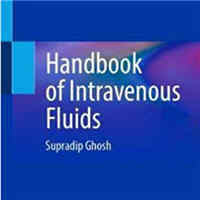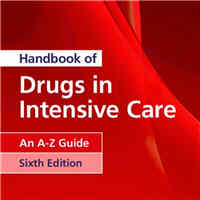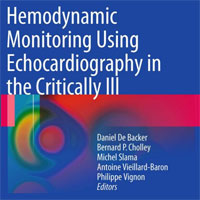Tag: treatment
When Antibiotic Treatment Fails
What to do when antimicrobial treatment fails and when and how to define it? These are three very common questions arising when clinicians use antibiotics. Categorization of responders and non-responders early in the course... read more
Humanizing the Treatment of Hyperactive Delirium in the Last Days of Life
When patients with advanced cancer near the end of their life, it is important for physicians, nurses, and other health care personnel to respect and dignify the dying process of the patient. This requires a shift in focus... read more
Oestrogen Inhibition Reverses PAH and Associated Metabolic Defects
Increased oestrogen is a strong epidemiological risk factor for development of pulmonary arterial hypertension (PAH) in patients, associated with metabolic defects. In addition, oestrogens drive penetrance in mice carrying... read more
Addressing Antimicrobial Resistance and Stewardship
Antimicrobial-resistant infections affect more than 2 million people annually in the United States alone, accounting for an estimated 23 000 deaths and estimated economic costs of $55 billion. Recent projections suggest... read more
Systematic review suggests synovial fluid analysis when necessary for diagnosis of gout
Gout presents with acute attacks of synovitis that start out as intermittent but can advance to chronic symptoms.... read more
Efficacy of Combination Therapy of Shenfu Injection and Postresuscitation Bundle in Patients With Return of Spontaneous Circulation
This study demonstrates that Shenfu injection in combination with conventional postresuscitation care bundle treatment is effective at improving clinical outcomes in patients with return of spontaneous circulation after in-hospital... read more
Therapeutic Interchange of Clevidipine For Sodium Nitroprusside in Cardiac Surgery
Sodium nitroprusside (SNP) has been used clinically for decades for the treatment of hypertension associated with cardiac surgery.... read more
Hypertension and Prehypertension Underdiagnosed, Undertreated in U.S. Children
Hypertension and prehypertension in children often go undiagnosed, according to a new study published in Pediatrics. The study focused on children with abnormal blood pressures across the United States.... read more
Metformin and Aspirin Potential Key in Treating Inflammatory Diseases
Ingredient in aspirin combined with popular diabetes drug can turn off faulty protein that plays a key role in inflammatory diseases, such as rheumatoid arthritis. ... read more
Sepsis National Hospital Inpatient Quality Measure
The Center for Medicare and Medicaid Services adopted the Early Management Bundle, Severe Sepsis/Septic Shock (SEP-1) performance measure to the Hospital Inpatient Quality Reporting Program in July 2015 to help address the... read more
Variation in Monitoring and Treatment Policies for Intracranial Hypertension in TBI
Substantial variation was found regarding monitoring and treatment policies in patients with Traumatic Brain Injury (TBI) and intracranial hypertension. The results of this survey indicate a lack of consensus between European... read more
The Overlaps of Asthma or COPD with OSA
Asthma, chronic obstructive pulmonary disease (COPD) and obstructive sleep apnoea (OSA) are the most common respiratory disorders worldwide. Given demographic and environmental changes, prevalence for each is likely to increase. Some... read more
Examining When to Provide Pain Management for Patients
Sometimes a lack of pain medication is the patient's best form of treatment. Eradicating pain has been a focus of medicine throughout history, from the early use of cocaine to the current use of fentanyl. As a prehospital... read more
CDC Urges Early Recognition, Prompt Treatment of Sepsis
The Centers for Disease Control and Prevention today launched Get Ahead of Sepsis, an educational initiative to protect Americans from the devastating effects of sepsis. This initiative emphasizes the importance of early... read more
A multifaceted intervention to improve treatment with oral anticoagulants in atrial fibrillation
Oral anticoagulation is underused in patients with atrial fibrillation. We assessed the impact of a multifaceted educational intervention, versus usual care, on oral anticoagulant use in patients with atrial fibrillation.... read more
FDA Approves ‘living drug’ to Cure Cancer
FDA has approved the first treatment to redesign immune system so it attacks the cancer cells. Kymriah therapy, which leaves 83% of people free of a type of blood cancer, costs about $475,000 and was developed by Novartis.... read more
Individualizing Thresholds of Cerebral Perfusion Pressure Using Estimated Limits of Autoregulation
Individualized autoregulation-guided cerebral perfusion pressure management may be a plausible alternative to fixed cerebral perfusion pressure threshold management in severe traumatic brain injury patients. Prospective randomized... read more
Antibiotic Guidelines Improve Prescription Practices for Vulnerable Infants
Yale University School of Medicine neonatal intensive care unit (NICU) significantly reduced the number of cases of late-onset sepsis, a leading cause of death among pre-term infants, by implementing guidelines designed to... read more
Incidence, Prevalence, and Management of MRSA Bacteremia Across Patient Populations
Methicillin-resistant Staphylococcus aureus (MRSA) infection is still a major global healthcare problem. Of concern is S. aureus bacteremia, which exhibits high rates of morbidity and mortality and can cause metastatic or... read more
Successful Long-Term ECMO for Invasive Pulmonary Aspergillosis
Extracorporeal membrane oxygenation is an established life-saving procedure for severe acute respiratory failure due to various causes. Long-term extracorporeal membrane oxygenation might be considered if the primary causes... read more
External Validity of Electronic Sniffers for Automated Recognition of ARDS
Automated electronic sniffers may be useful for early detection of acute respiratory distress syndrome (ARDS) for institution of treatment or clinical trial screening. Published electronic sniffer algorithms for ARDS may... read more
Clinical Impact of COPD on Non-cystic Fibrosis Bronchiectasis
Clinical impact of chronic obstructive pulmonary disease on non-cystic fibrosis bronchiectasis. A study on 1,790 patients from the Spanish Bronchiectasis Historical Registry. Patients with BE related to COPD have the same... read more









